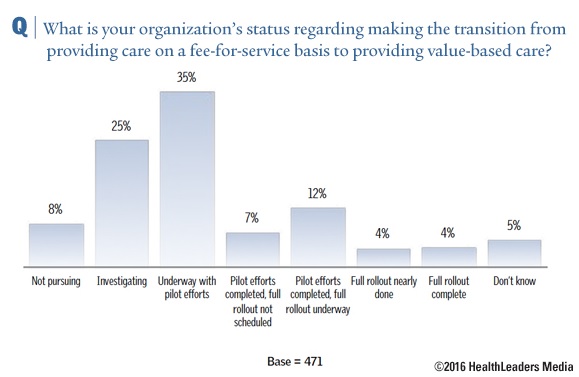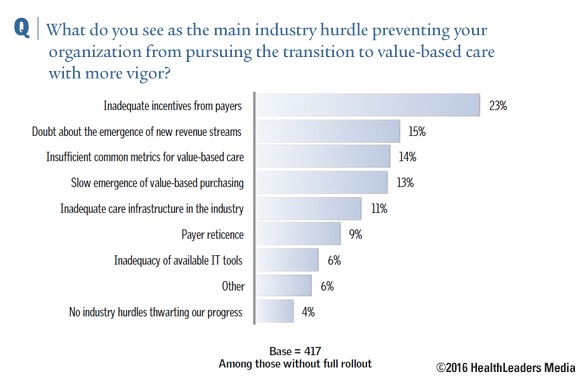Providers Face Value-Based Care’s Financial Reality, Demand
Choosing what value-based care delivery path to take is often a nail-biting decision. Greater provider focus on revenue flow and financial performance may be the solution.

- The value-based care transition is a sizable endeavor for healthcare providers. Jumping in head first into dark payment water takes bravery, experience, and knowledge. Although healthcare leaders are often hesitant to fully commit to revenue cycle change, they at least have their toes in the value-based water, according to an online survey from HealthLeaders Media.

Why are providers allegedly coming up to the plate, getting in position to swing a grand slam, then turning around and plopping back down on the bench before the pitch is thrown? It may boil down to erroneous financial focus and a dubiousness to act.
Unknown payment models are emerging and evolving since passage of the Patient Protection and Affordable Care Act (PPACA) – aka the Affordable Care Act – six years ago. There is still a great deal to learn as the healthcare industry progresses, researchers claim.
The way the healthcare industry thinks about cost management is changing, they say. The industry is in a flux of sorts, “in the midst of a massive retooling that is dramatically altering the way we think about cost.”
“Most healthcare providers are still operating with processes and systems that focus on the needs and priorities of their staffs rather than those of their patients. That has to change. Access and delivery of care must become a top priority.”
“In many aspects of healthcare, we see indications of change, with movement toward new payment models and investments in infrastructure to support the delivery of value-based care,” writes Michael Zeis, Senior Research Analyst for HealthLeaders Media.
“While the direction is clear, it is also clear that many of today’s providers lean more toward positioning for change than toward implementing change.”
“Providers face two cold financial realities. First, the payment models that are to replace fee-for-service compensation are still emerging. Providers make cautious forays into new territory — it’s financially prudent not to extend too far.”
“Second, for many, pursuing new models for delivering care requires significant investments, which places demands on both capital and personnel.”
Highlights of the survey’s value-based findings
Over one-third of the 471 organizations surveyed online last October said their organizations have begun pilot efforts to help make the fee-for-service switchover easier.
An additional twenty-seven percent confirmed they had either completed pilots or were in the midst of some form of rollout.

Healthcare providers have revenue on their minds, say researchers. Providers are most concerned with inadequate incentives from payers.
They also are experiencing high trepidation levels regarding the emergence of their revenue cycle streams.
Only 4 percent of those surveyed said they are not experiencing any value-based hiccups.

Data analytics, patient experience improvements, care redesign efforts, and care coordinators top the list for where organizations plan to increase investment efforts most over the next three years. Nearly half stated they anticipate increasing ICD-10 investment efforts.

Regarding financial forecast predictions for the 2016 / current fiscal year, things look rather sunny. Forty-eight percent of organization surveyed expect to achieve positive financial results. Nine percent predict a strongly positive financial future.

“Despite uncertainty about sources of future revenue, establishing a strong care continuum today will put healthcare organizations in position to deliver value tomorrow,” researchers state.
“Picking a path toward delivering value is a difficult and high-stakes decision — relationships formed today will support revenue flow and financial performance in the future.”
